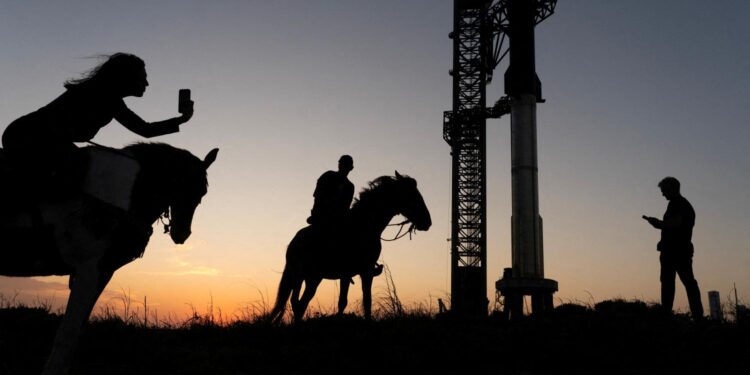SpaceX will attempt to launch its Starship mega rocket on a debut test flight round the earth today despite a warning by the company’s founder, Elon Musk, that it has “a million ways to fail”.
The prototype space vehicle — Musk’s vision for sending crew and cargo to the moon and Mars — is the most powerful rocket developed, and getting it off the ground on its first attempt, let alone to orbit, is considered a push.
The first 150-minute window of opportunity to launch it from Starbase, the company’s production facility and spaceport in Boca Chica, Texas, opens at 7am US Central time (1pm UK time).

Starship the most powerful rocket built
“I really want to lower expectations as much as possible here,” Musk said last night during a live chat event on Twitter Spaces. “It’s a very risky flight; this is not something that’s a sure thing at all . . . Success is not what should be expected tomorrow; that would be insane.”
Previous launches of Starship have involved only the upper stage — the part that would carry cargo and crew. This time, the spacecraft is stacked on top of the never-flown Super Heavy booster, creating a behemoth 120m tall (390ft).
The whole system is designed to be fully reusable, but on this test flight, the booster is due to drop into the Gulf of Mexico after separation from the upper stage roughly three minutes into flight.
The hope is for the upper stage to get close to orbital velocity — about 28,160kmh (17,500mph) — and continue eastward through the Straits of Florida, across the Atlantic, Indian and Pacific oceans, splashing down about 100km (62 miles) off the Hawaiian island of Kauai.
But such is the nature of rocket development that what is aimed at being a 90-minute journey around the planet could last mere seconds.
“It’s just a very fundamentally difficult thing,” said Musk, who put the rocket’s chances of reaching orbit on this test flight at 50-50. “If we get far enough away from the launch pad before something goes wrong, then I think I would consider that to be a success. Just don’t blow up the pad.”
The mission is considered a learning opportunity, with more rockets already being lined up behind it.
“We have a steady cadence of rocket production afterwards, with significant improvements between each iteration of rockets. The payload for this mission is information; information that allows us to improve the design of future Starship builds,” Musk said.
“If we get any information that allows us to improve the design of upcoming builds of Starship, that’s a success. Its purely for learning . . . that’s really what matters here.”
Nasa has a $3 billion contract with SpaceX to develop Starship as a landing vehicle to connect with the space agency’s Orion crew capsule in lunar orbit and ferry astronauts down to the moon’s surface. The first moon landing is not expected before 2026 at the earliest.
Musk also envisions sending private passengers on charter flights around the moon and, in the longer term, taking 100 at a time to colonise Mars. “It’s an actual path to being a multi-planetary civilisation; the fact that success is one of the possible outcomes is the amazing thing. Now we need to make it from one of the possible outcomes to being probable. That’s very difficult,” he said.
Source: The TImes



Recent Comments